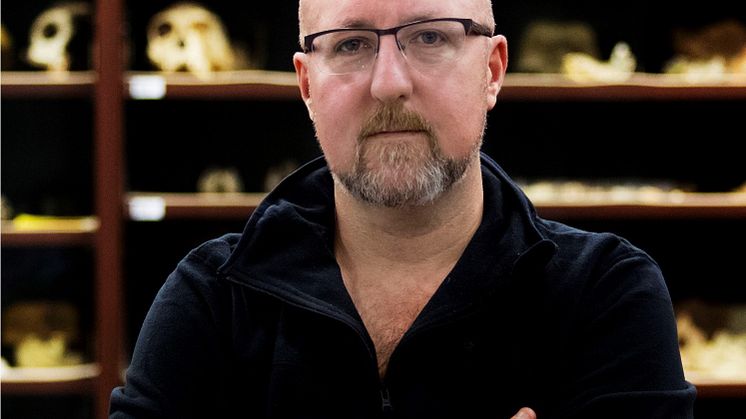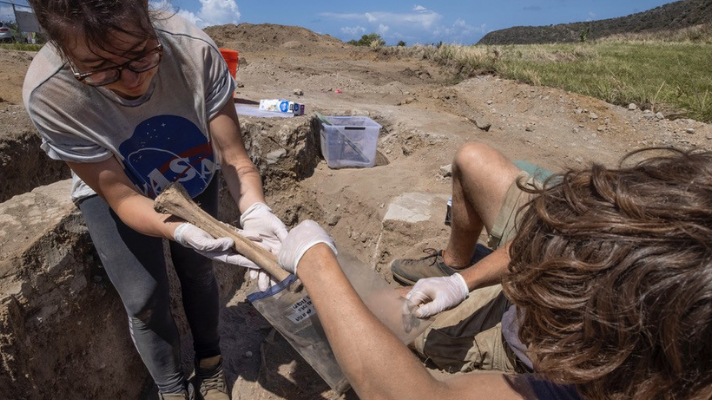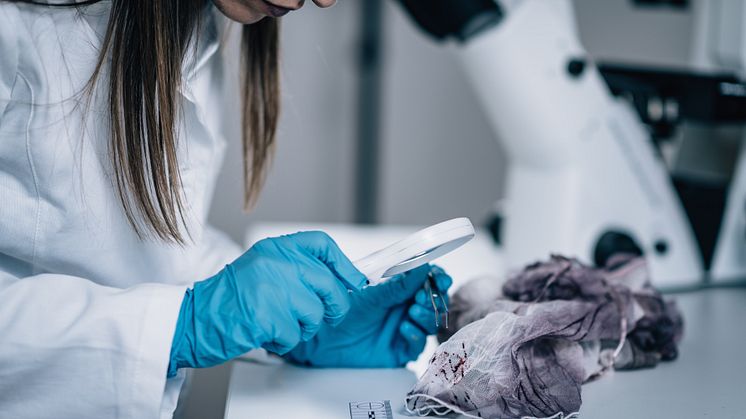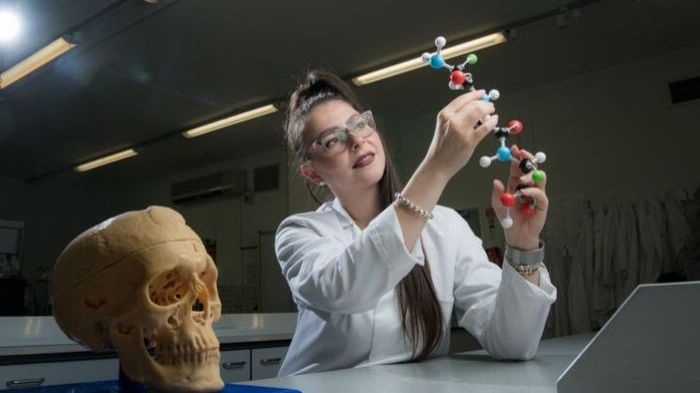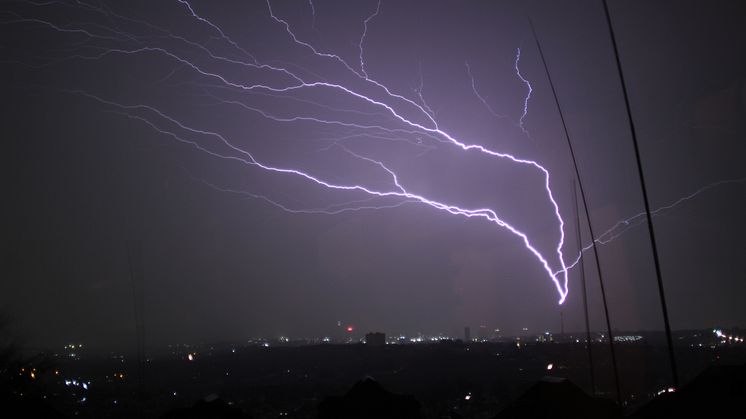
Press release -
Forensic science is unlocking the mysteries of fatal lightning strikes
New research by scientists from the University of the Witwatersrand (Wits University) in South Africa and Northumbria University could help forensic teams understand whether people or animals were the victims of fatal lightning strikes, based solely upon an analysis of their skeletons.
The research was undertaken between specialists in forensic anthropology, anatomy, lightning physics, and micro-computed tomography (micro-CT) from Wits University, Northumbria University, and the Nuclear Energy Corporation of South Africa (NECSA).
Their study is published in the journal Forensic Science International: Synergy, and titled Harnessing Thor's Hammer: Experimentally induced lightning trauma to human bone by high impulse current
Climate change is increasing and there is evidence to suggest the incidence and severity of thunderstorms and lightning strikes could increase. Currently, more than 24,000 people worldwide die by lightening each year.
When a lightning death is suspected, the forensic pathologist determines cause of death by looking for signs of lightning-trauma to skin and organs of the deceased. However, when the body is skeletonised, soft tissues are absent and cause of death by lightning cannot be attributed.
The researchers generated artificial lightning in the laboratory, which was then applied directly to human bone, extracted from donated bodies who had died of natural causes. What the experiments showed was a pattern of damage to bone that was uniquely caused by short duration lightning current.
Senior author Dr Patrick Randolph-Quinney, Associate Professor from the Forensic Science Research Group at Northumbria University, and the Centre for the Exploration of the Deep Human Journey at Wits University in South Africa, said: “Using high-powered microscopy we were able to see that there is a pattern of micro-fracturing within bone caused by the passage of lightning current. This takes the form of cracks which radiate out from the centre of bone cells, or which jump irregularly between clusters of cells. The overall pattern of damage looks very different when compared to other high energy trauma, such as that caused by burning in fire.
“Even though this experiment was conducted under controlled conditions in the lab, we see the same trauma in animals killed by natural lightning. We were able to compare the human results with bone from a giraffe killed by lightning – and the pattern of trauma is identical even though the micro-structure of human bone is different from animal bone. This is the smoking gun that we were looking for in forensic lightning pathology.”
What is unique about this research is that it has brought together different disciplines with a common focus on trying to understand the effects of lightning on the body, with the long-term aim of making the environment safer for those at risk of being killed by lightning.
This new research provides a tool to investigate cause of death when skeleton remains are recovered as part of accident or death investigation.
Dr Nicholas Bacci, Lecturer in the School of Anatomical Sciencesat Wits University and lead author of the paper, said: “Identifying a fatality caused by lightning strike is usually done though marks left on the skin, or damage to the internal organs - and these tissues don’t survive when bodies decompose. Our work is the first research that identifies unique markers of lightning damage deep within the human skeleton and allows us to recognise lightning when only dry bone survives. This may allow us to recognise accidental death versus homicide in cases where cause is not apparent, whilst at the same time allowing us to build a more complete picture of the true incidence of lightning fatalities.”
-- Ends –
Notes to editors
About The University of the Witwatersrand (Wits University)
Wits University is a leading African university ranked in the top 1% of universities in the world. In 2022, Wits celebrates 100 years of academic and research excellence, social justice, and the advancement of the public good. The University’s research output has doubled in the past five years and offers new ways to impact society for good. Visit https://wits100.wits.ac.za/.
Additional quotes:
Associate Professor Ken Nixon from the School of Electrical and Information Engineering at Wits University and member of the Board of Directors of the African Centre for Lightning and Electromagnetics Network said:“This is a multi-disciplinary project, which highlights how forensic scientists can work with physicists and engineers to explore a real-world problem, which is implicated in the deaths of many people annually, and especially in countries such as South Africa, Zambia and Uganda.
“At a time when global climate change is driving increases in the number and severity of thunderstorms and lightning strikes, we need more research like this, bringing together different fields with real experience of dealing with lightning. Ultimately our aim at Wits is to make our built environment and countryside safer for those exposed to the lethal effects of lightning energy in South Africa, and to provide life-saving knowledge for those around the globe who are increasingly put in harm’s way of this natural phenomenon.”
Dr Hugh Hunt from the Johannesburg Lightning Research Laboratory (JLRL) at Wits University said: “We used equipment to generate high impulse currents in the lab, (up to 10,000 Amps), which mimicked the effect of lightning passing through the skeleton. Natural lightning can often have significantly higher peak currents, but this allowed us to have much greater control over the experiment than trying to somehow place human tissue in the path of a natural lightning strike.”
Topics
Categories
Northumbria is a research-rich, business-focused, professional university with a global reputation for academic excellence. Find out more about us at www.northumbria.ac.uk --- Please contact our Media and Communications team at media.communications@northumbria.ac.uk with any media enquiries or interview requests ---








